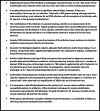Managing Complicated Nontuberculous Mycobacteria Infections in Plastic Surgery
- PMID: 39449711
- PMCID: PMC11500787
- DOI: 10.1097/GOX.0000000000006254
Managing Complicated Nontuberculous Mycobacteria Infections in Plastic Surgery
Abstract
Nontuberculous mycobacteria (NTM) infections after cosmetic surgery have become an increasing concern. These infections are often initially misdiagnosed and treated with standard antibiotic regimens, which fail to resolve the underlying infection, leading to prolonged patient suffering. In this case study, we describe a chronic wound infection caused by Mycobacterium abscessus subsp. bolletii after a muscle-repair abdominoplasty. This case illustrates the diagnostic and therapeutic challenges plastic surgeons face in successfully treating such infections. Initial obstacles included the isolation of co-contaminating bacteria that masked the NTM infection, the use of antibiotics ineffective against the specific NTM species, and the failure to identify the infection source. In this instance, contaminated skin marker ink used to mark the rectus muscle, combined with a nonabsorbable (permanent) suture for muscle repair, led to the development of a biofilm that acted as a persistent reservoir for the infection, resistant to antibiotic treatments. Complete resolution was achieved only after evaluation by a plastic surgeon experienced in treating NTM infections and the subsequent removal of the permanent suture. The delayed suture removal contributed to a 15-month recovery period. This case underscores the importance of early recognition of NTM infections after cosmetic procedures. By sharing this case, we aim to raise awareness of NTM infections and help prevent future cases of misdiagnosis and prolonged antibiotic treatments. Key points regarding the diagnosis, sources of infection, and treatment options for NTM infections are highlighted in this article using "text boxes" to emphasize the most important information and provide concise summaries of critical insights.
Copyright © 2024 The Authors. Published by Wolters Kluwer Health, Inc. on behalf of The American Society of Plastic Surgeons.
Conflict of interest statement
The authors have no financial interest to declare in relation to the content of this article. The Universidad de Las Américas, Quito, Ecuador, sponsored the article processing fee.
Figures




Similar articles
-
Current challenges in pulmonary nontuberculous mycobacterial infection: a case series with literature review.Postgrad Med. 2024 Sep;136(7):770-781. doi: 10.1080/00325481.2024.2401766. Epub 2024 Sep 12. Postgrad Med. 2024. PMID: 39259505 Review.
-
Epidemiology and clinical outcomes in skin and soft tissue nontuberculous mycobacteria infections: A retrospective study.J Infect Public Health. 2025 Mar;18(3):102655. doi: 10.1016/j.jiph.2025.102655. Epub 2025 Jan 10. J Infect Public Health. 2025. PMID: 39813965
-
Mycobacterium abscessus subspecies abscessus infection associated with cosmetic surgical procedures: Cases series.IDCases. 2020 Oct 25;22:e00992. doi: 10.1016/j.idcr.2020.e00992. eCollection 2020. IDCases. 2020. PMID: 33194548 Free PMC article.
-
Specificity of Immunoglobulin Response to Nontuberculous Mycobacteria Infection in People with Cystic Fibrosis.Microbiol Spectr. 2022 Aug 31;10(4):e0187422. doi: 10.1128/spectrum.01874-22. Epub 2022 Jul 6. Microbiol Spectr. 2022. PMID: 35863022 Free PMC article.
-
Systematic literature review of the diagnosis, prognosis, and treatment of peritoneal dialysis-related infection caused by nontuberculous mycobacteria.BMC Nephrol. 2024 Nov 28;25(1):432. doi: 10.1186/s12882-024-03841-2. BMC Nephrol. 2024. PMID: 39609738 Free PMC article.
References
-
- Jabbour SF, Malek AE, Kechichian EG, et al. . Nontuberculous mycobacterial infections after cosmetic procedures: a systematic review and management algorithm. Dermatol Surg. 2020;46:116–121. - PubMed
-
- Cusumano LR, Tran V, Tlamsa A, et al. . Rapidly growing Mycobacterium infections after cosmetic surgery in medical tourists: the Bronx experience and a review of the literature. Int J Infect Dis. 2017;63:1–6. - PubMed
LinkOut - more resources
Full Text Sources
